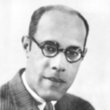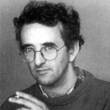The hour of the star
(Book)
F LISPE
1 available
Copies
| Location | Call Number | Status |
|---|---|---|
| Shirlington - Adult Fiction | F LISPE | Available |
Description
More Details
Notes
Similar Titles From NoveList
Similar Authors From NoveList
Published Reviews
Publisher's Weekly Review
The narrative material of this short, almost weightless tale by the late Brazilian writer (19251977) is reminiscent of old-fashioned naturalism, but the intention is far from that. Macabea, a young woman from the backwoods, arrives in bewildering Rio. Homely, ignorant, without skills or experience, she lodges in a shabby tenement in a squalid red-light district. Her transient boyfriend, a strutting lout and sham, soon abandons her. After a time, Macabea is struck down by a Mercedes and killed: an obscure life, a banal death. The author's presence is continuously feltthe narrator-of-record is a mere front for itand it is here that the work goes awry. The nagging voice attempts to elevate Macabea's little life to nobility and religious significancebut to no avail. And the modish commentary on novelistic method amounts to little more than affectation. (April 10) (c) Copyright PWxyz, LLC. All rights reserved
Library Journal Review
As Lispector was dying in 1977, she and her secretary constructed this novel from notes, which partially explains its fragmentary nature. The detached male narrator, Rodrigo S.M., tells the story of Macabea, a rickety, Coca-Cola-drinking virgin from the poor region of Alagoas, who moves to Rio's urban jungle. She lands a job as a typist and becomes enamored of the self-seeking Olimpico. After he dumps her for the worldlier Gloria, Macabea requests the advice of a fortune teller. No sooner is she buoyed by the seer's optimistic predictions than she is run over by a car. The joy of this novel is that we experience both Rodrigo's indulgent introspection as well as Macabea's woeful life. This new translation begs comparison with Giovanni Pontiero's 1986 version; many phrases are identical, but some wording is slightly different or has been contemporized. The translator, author of the Lispector biography Why This World, understands the nuances of Lispector's often-hermetic style. VERDICT For readers who passed it up the first time, now would be the chance to become acquainted with the last and perhaps finest work of one of the foremost authors of 20th-century Brazilian literature.-Lawrence Olszewski, OCLC Lib., Dublin, OH (c) Copyright 2012. Library Journals LLC, a wholly owned subsidiary of Media Source, Inc. No redistribution permitted.
Kirkus Book Review
From the late Brazilian novelist/short-story writer Lispector, the short, unhappy life of a Rio slum girl whose existence is ""duller than plain bread and butter."" Lyrical, funny, finally quite sad. The mysterious narrator, possibly Lispector's alter ego, is Rodrigo S.M., a man of apparent wealth and leisure, who is telling the story--in a roundabout way, with many pauses and sighing asides--of Macabea, an ugly, sickly girl from a poverty-stricken northeastern province who makes her way to Rio de Janeiro, finds marginal work as a typist with a company that distributes pulley equipment, and shares a squalid room in the red-light district with four other girls. She barely knows she exists: ""I am a typist and a virgin, and I like Coca-Cola,"" she tells herself firmly, but soon she's adrift without an anchor of identity in a world that is utterly beyond her comprehension. She meets a shallow young man named Olympico de Jesus, but drives him crazy with her non sequiturs (""I love nuts and bolts. How about you?""), and he finally leaves her for Gloria, a femme fatale who works in her office. Trying to do something positive, Macabea goes to a callous quack of a doctor for a physical--the man tells her she's in the early stages of pulmonary tuberculosis, and prescribes ""Italian spaghetti"" to counter her weight loss before kicking her out of his office. Searching for one last glimmer of hope, Macabea borrows money and goes to see an ex-prostitute fortune-teller named Madame Carlota, who assures her: ""Your life is about to change completely. . . You are about to come in for a great fortune that a foreign gentleman will bring to you in the night."" Leaving the old charlatan's house, Macabea is struck down and killed by a yellow Mercedes. This is Lispector's last novel (first published in Brazil in the year of her death, 1977) and, all in all, a painful but lovely testimony to her superb talents. Copyright ©Kirkus Reviews, used with permission.
Reviews from GoodReads
Citations
Lispector, C., Moser, B., Tóibín, C., & Valente, P. G. (2020). The hour of the star (Centennial edition.). A New Directions Books.
Chicago / Turabian - Author Date Citation, 17th Edition (style guide)Clarice Lispector et al.. 2020. The Hour of the Star. New York: A New Directions Books.
Chicago / Turabian - Humanities (Notes and Bibliography) Citation, 17th Edition (style guide)Clarice Lispector et al.. The Hour of the Star New York: A New Directions Books, 2020.
Harvard Citation (style guide)Lispector, C., Moser, B., Tóibín, C. and Valente, P. G. (2020). The hour of the star. Centennial edn. New York: A New Directions Books.
MLA Citation, 9th Edition (style guide)Lispector, Clarice, Benjamin Moser, Colm Tóibín, and Paulo Gurgel Valente. The Hour of the Star Centennial edition., A New Directions Books, 2020.

































